What is a network security key and where to find yours
Network security key might sound like a technical term, but it’s just another name for a Wi-Fi password, the string of characters you use to join a network. Read on to learn how and where to find your network security key, how it safeguards your Wi-Fi network, and how a VPN can add an extra layer of protection to your online privacy.
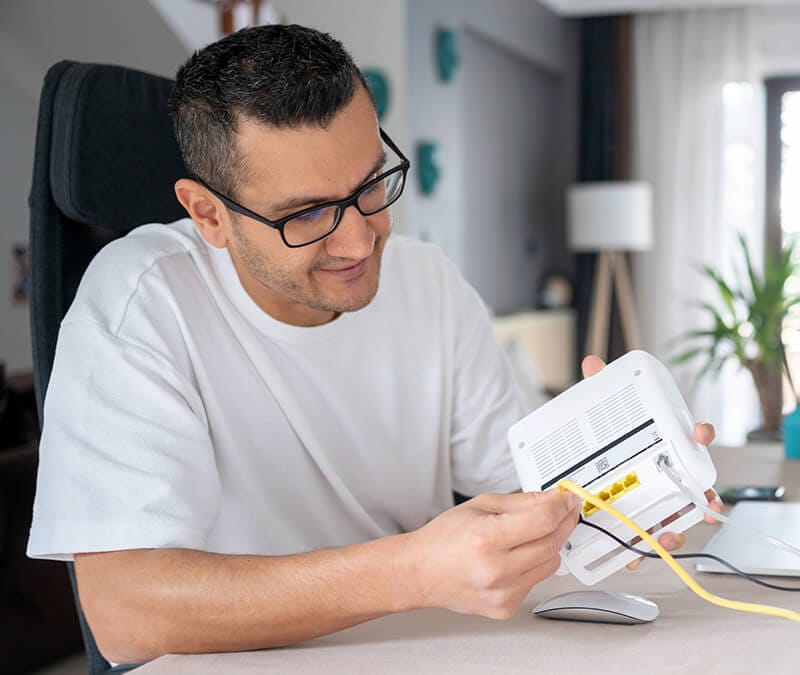
What is a network security key?
A network security key is the same thing as a Wi-Fi password. It’s a sequence of characters, often combining letters, numbers, and symbols, that authenticates whether a device can connect to a router’s Wi-Fi network. This helps protect networks from unauthorized access, mitigating potential risks like data interception.
A strong network security key can help:
- Save money and limit throttling by stopping piggybackers from using your connection.
- Protect you against man-in-the-middle attacks, where hackers intercept data as it flows between your device and the internet.
- Prevent cybercriminals from connecting to, and potentially spreading malware over, your home network.
How does a network security key work?
When you try to connect to a Wi-Fi network and enter the network security key, the router authenticates it with a “handshake.” During this process, the wireless security protocol verifies that the password you entered matches what it knows as the network password before granting access, ensuring only authorized users can connect.
Types of network security protocols
Network security keys use different wireless security or encryption protocols (sets of rules that scramble and secure data so only authorized devices can read it) to protect your Wi-Fi network and data. The four main types are WEP, WPA, WPA2, and WPA3.
Newer protocols offer stronger security against modern threats, including password cracking, eavesdropping, and unauthorized access. Due to known vulnerabilities, older wireless security protocols, such as WEP and WPA, have largely become obsolete.
Here’s what you should know about each protocol before configuring your Wi-Fi network.
WEP (Wired Equivalent Privacy)
WEP was the first Wi-Fi security protocol. However, it’s now generally seen as obsolete because it relied on static encryption keys that never changed and were vulnerable to cracking. By capturing data packets for a short time and analyzing them, attackers could figure out the key and gain full access to networks in a matter of minutes.
WPA (Wi-Fi Protected Access)
WPA improved security by introducing the Temporal Key Integrity Protocol (TKIP), which generated dynamic security keys, and Message Integrity Checks (MICs), which helped prevent data packet tampering. However, WPA2 replaced this protocol in 2004, instead using AES (Advanced Encryption Standard) for better security.
WPA2 (Wi-Fi Protected Access 2)
WPA2 uses AES encryption with CCMP (Counter Mode with Cipher Block Chaining Message Authentication Code Protocol), making it more secure than previous standards. WPA2 is still widely used, but its vulnerability to attacks like KRACK (Key Reinstallation Attacks), which exploit weaknesses in the handshake process to intercept or manipulate network traffic, mean WPA3 is gradually replacing it.
WPA3 (Wi-Fi Protected Access 3)
WPA3 is the latest Wi-Fi security standard. It uses stronger encryption with extremely long and complex keys to lock your network, making it much harder for hackers to crack. WPA3 also improves the handshake process with the safer SAE (Simultaneous Authentication of Equals), which prevents attackers from guessing your password using offline dictionary attacks.
How to find your network security key
The network security key is usually on the bottom or back of your router. But if you already changed the default Wi-Fi security key, you’ll need to find it using a device that’s connected to the network.
We’ll show you how to find your network security key on a router, Windows PC, Mac computer, Android device, or iPhone.
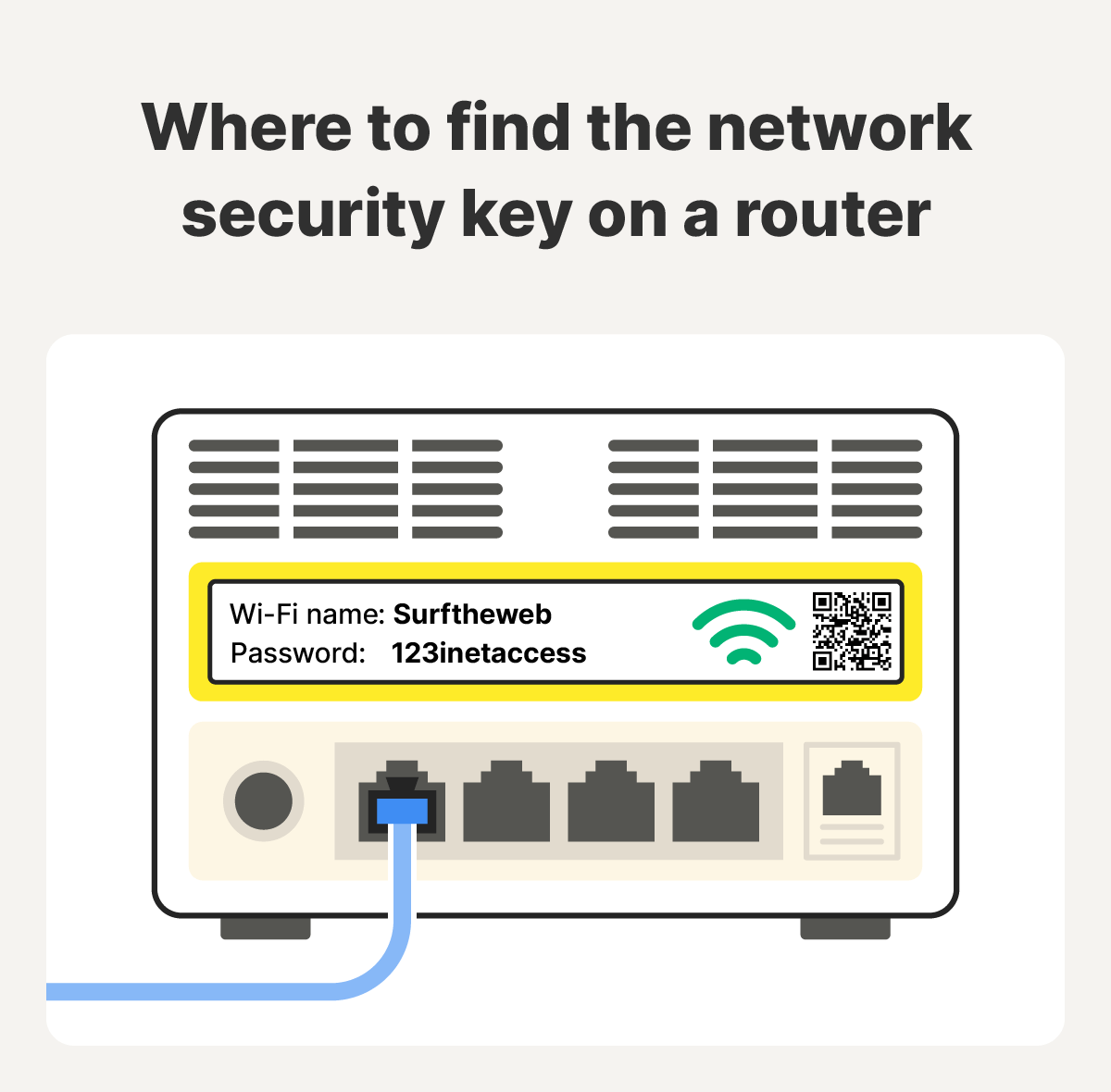

Where to find the network security key on a router
Most routers come with the network key written on the back or bottom of the router. It’s usually labeled with a different name, such as passcode, password, wireless password, or simply security key. If you can’t find the network security key on the router, check your router’s instruction manual.
Where to find the network security key on a Windows computer
Here’s how to find your network security key on a Windows 10 or 11 device that’s connected to the network:
- Type Control Panel into the search bar, then click Open.
- Choose Network and Internet.
- Click Network and Sharing Center.
- Click your Wi-Fi network name.
- Click Wireless Properties.
- Choose the Security tab, then click the Show characters checkbox. You should see your network security key on the display.
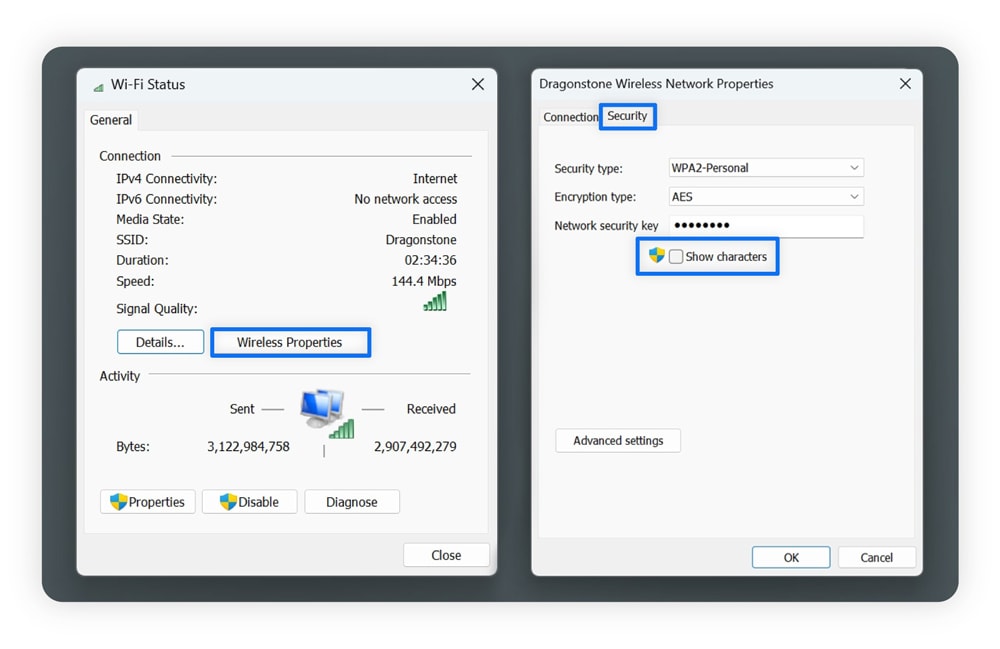

Where to find the network security key on a Mac computer
Here’s how to find your network security key on a Mac or Macbook that’s connected to the network:
- Click the Spotlight Search (magnifying glass) in the top-right of your screen, or you can use the keyboard shortcut “Command + Spacebar.”
- Search for Keychain Access, then select the app from the search results.
- Choose Open Passwords. Then, type in your device password or use your fingerprint to unlock the Keychain.
- Navigate to Wi-Fi in the sidebar and tap on a network name (SSID).
- Hover over the dots beside Password to reveal your network security key.
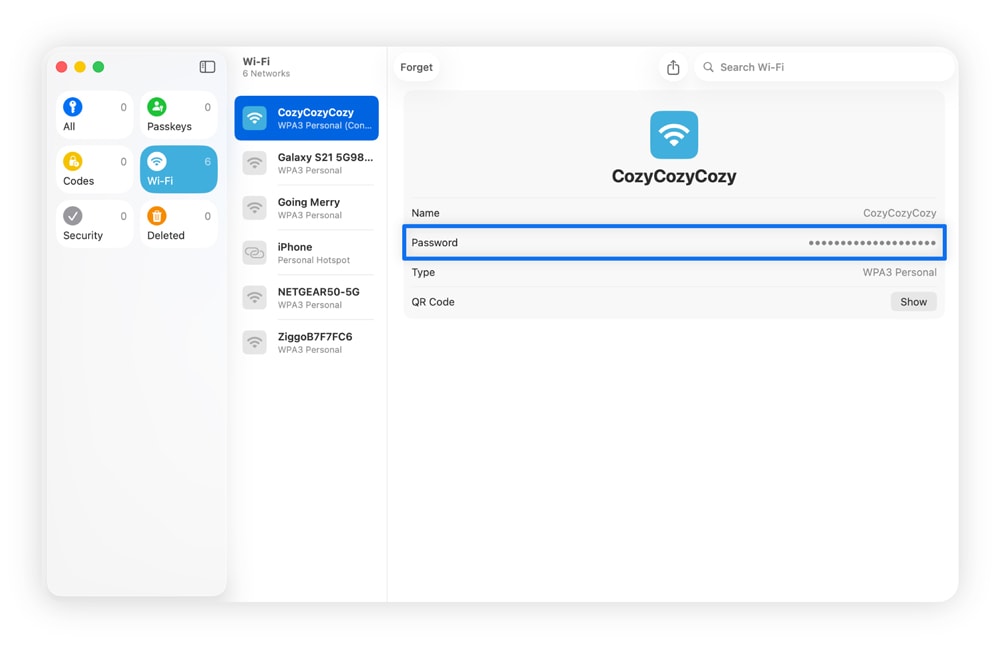

Where to find the network security key on Android smartphones
It’s not possible to view Wi-Fi network security keys on most newer Android devices. But you can get a QR code to join a network by following these steps:
- Open the Settings app on a connected device.
- Tap Connections, then Wi-Fi.
- Select the connected network.
- Tap QR code to reveal a QR code that you or your guest can scan to join the Wi-Fi network.
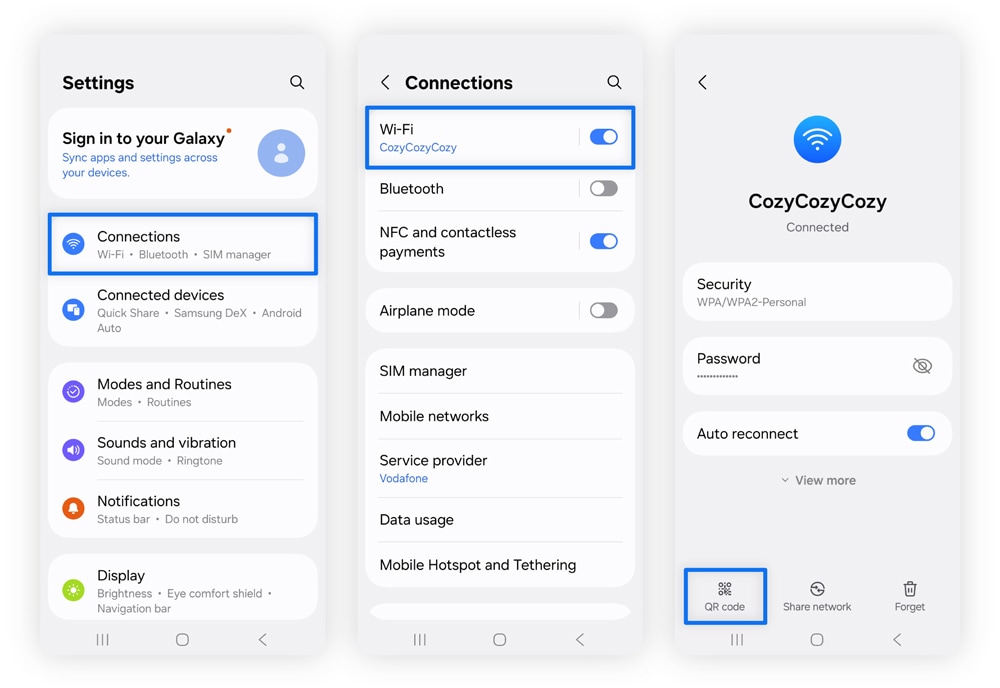

Keep in mind that this process may vary depending on your phone’s model and manufacturer. If you’re still having trouble locating your network security key, refer to your phone’s manual.
Where to find the network security key on iOS devices
You can find your network security key in the settings app on an iPhone or iPad that’s connected to the network. Here’s how:
- Open Settings, then tap Wi-Fi.
- Find the network and tap the info icon next to its name.
- Tap Password and authenticate your identity to reveal the Wi-Fi password.
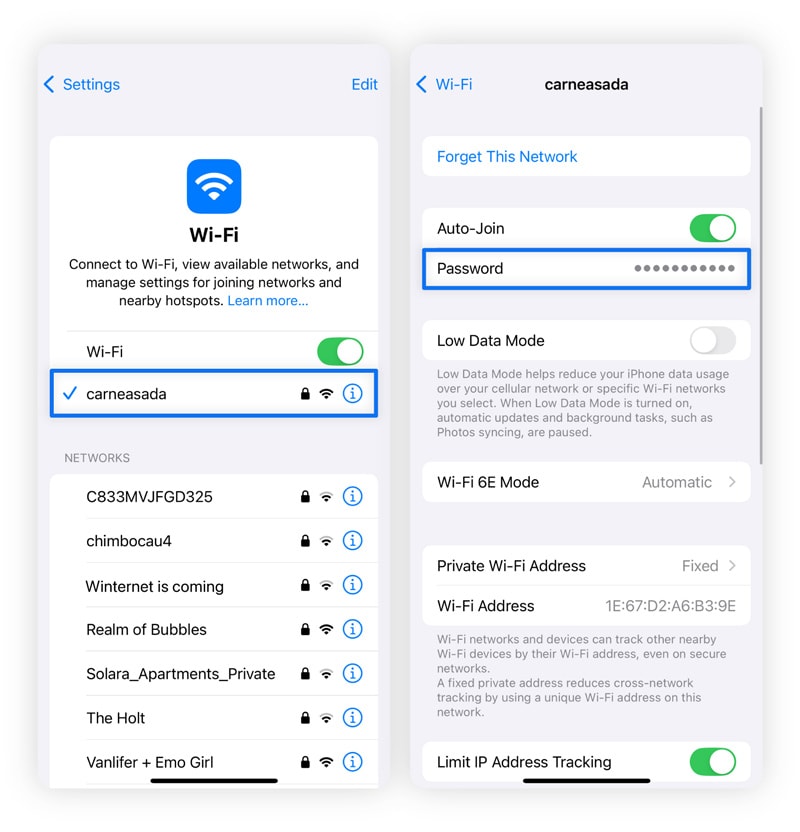

What is my hotspot network security key?
Your hotspot network security key is the password needed for another device to connect to your iPhone or Android’s “hotspot” (a local network using your mobile data, allowing other devices to connect to the internet without Wi-Fi).
Here’s how to find your hotspot password:
- iOS: Go to Settings > Personal Hotspot. Your network security key will appear beside Wi-Fi Password.
- Android: Go to Settings > Connections or Mobile Network > Mobile Hotspot and Tethering > Mobile or Personal Hotspot. The key will be next to Password.
How to change your network security key
To update your network security key, you’ll first need to find your router’s IP address. Where to find this will depend on the device you’re using, but it will generally be printed on a sticker on the router itself, along with the default SSID and network security key.
Once you’ve found it, type the IP address into your web browser and log in to the admin panel using your default admin credentials. From there, you can navigate to settings and update your network security key. Then, reconnect all of your devices using the new password.
It’s generally advisable to change your Wi-Fi password when you get a new router, creating one that’s more secure than the default option.
Tips for strong network security
To maintain good network security, you should practice good password hygiene, enable the strongest encryption protocols, batten down your personal home network, and install firmware updates on both your router and connected devices. While a strong network security key is essential for protecting your Wi-Fi network, it's just one piece of the puzzle.
Here’s what it looks like as a whole:
- Change the default password: Change the default router password as soon as you set up your device. Some manufacturers may reuse network security keys across units, and these credentials are widely known, making your network an easy target for hackers.
- Create a strong password: Create a unique and secure password for your network that you haven't used for any online accounts or previous networks. Use at least 15 characters to make your network security key harder to guess. For a bit of help, consider using a password generator to randomize your password and a password manager to easily remember it.
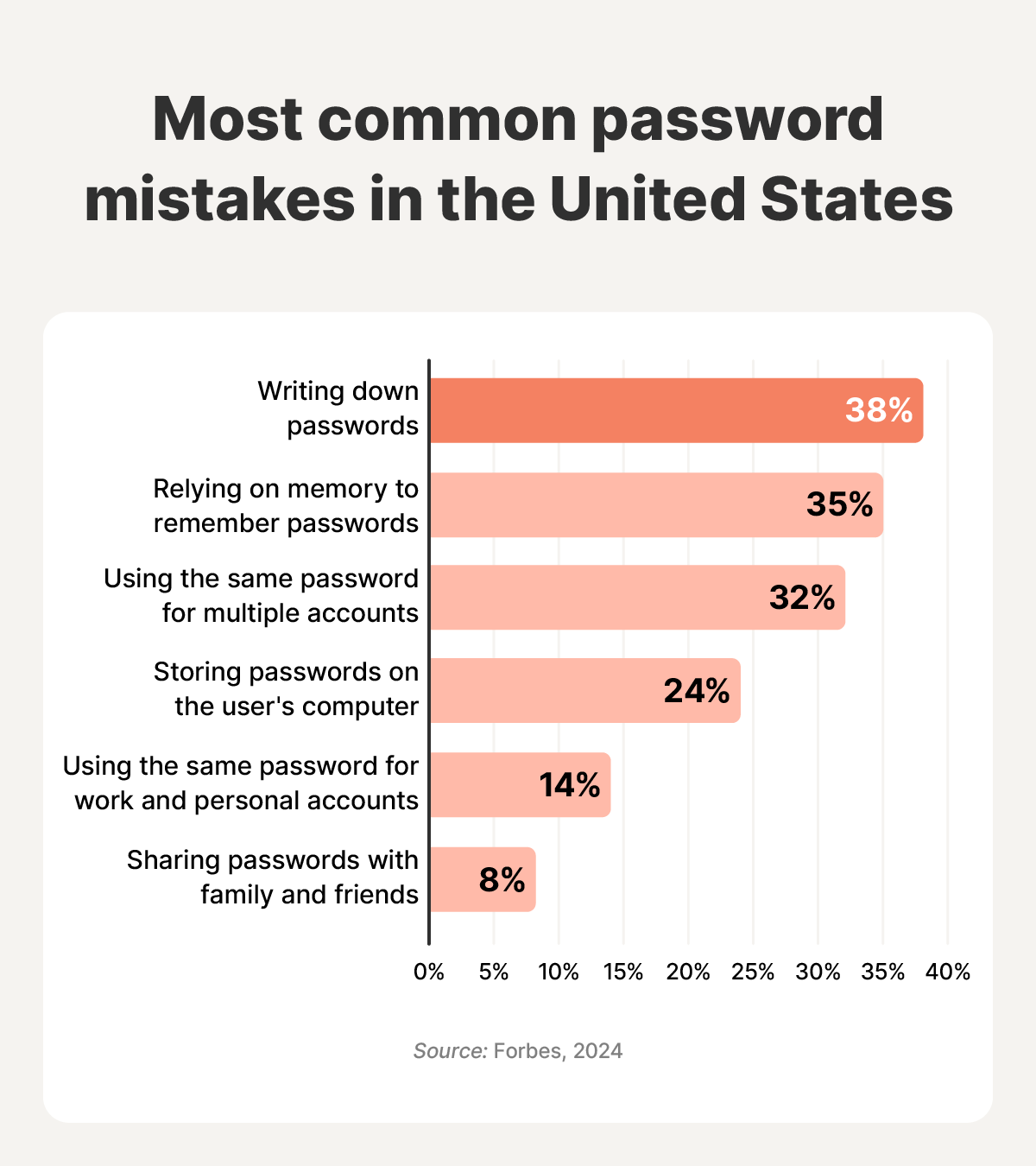

- Use WPA3: Enable WPA3 encryption if your router supports it; this provides the strongest protection against current cybersecurity threats.
- Disable WPS: Turn off Wi-Fi Protected Setup (WPS). It makes joining a network easier by allowing devices to connect without entering a password, but it can also open the door for unauthorized access.
- Create a guest network: Set up a separate guest network for visitors, so they can access the internet without connecting to your main network or devices. This helps prevent the spread of malware and data theft if a guest joins with an infected device.
- Update router firmware: Regularly check for and install router firmware updates to patch security vulnerabilities and improve performance.
Protect your device and sensitive information
Managing your network security key is just one part of effective digital hygiene and keeping your sensitive data safe online. Even if your Wi-Fi password is strong, your data could still be intercepted.
Whether you’re using a public or private Wi-Fi network, Norton VPN encrypts your internet connection to help safeguard the personal information you send and receive online, like your passwords and banking details. Install Norton VPN and start browsing in privacy today.
FAQs
Is a network security key the same as a Wi-Fi password?
Yes, the network security key is the same as the Wi-Fi password. It’s the string of characters needed to access a Wi-Fi network.
Why is my laptop asking for a network security key?
If your laptop asks for a network security key, it means the Wi-Fi you’re trying to connect to is password protected. Enter the password to establish a connection.
How often should I change my network security key?
Provided you create a strong network security key, you shouldn’t have to change it for no reason. However, if you suspect unauthorized devices might be lurking on your network, or you have reason to believe a hacker is targeting you, changing it can help strengthen your security.
How can I securely share my network security key with guests?
The most secure way to share your network security key is to create a dedicated guest network with a separate password. Then share it on a case-by-case basis when a visitor needs it. You can usually share a QR code that grants them network access, meaning they never see the password.
Editorial note: Our articles provide educational information for you. Our offerings may not cover or protect against every type of crime, fraud, or threat we write about. Our goal is to increase awareness about Cyber Safety. Please review complete Terms during enrollment or setup. Remember that no one can prevent all identity theft or cybercrime, and that LifeLock does not monitor all transactions at all businesses. The Norton and LifeLock brands are part of Gen Digital Inc.


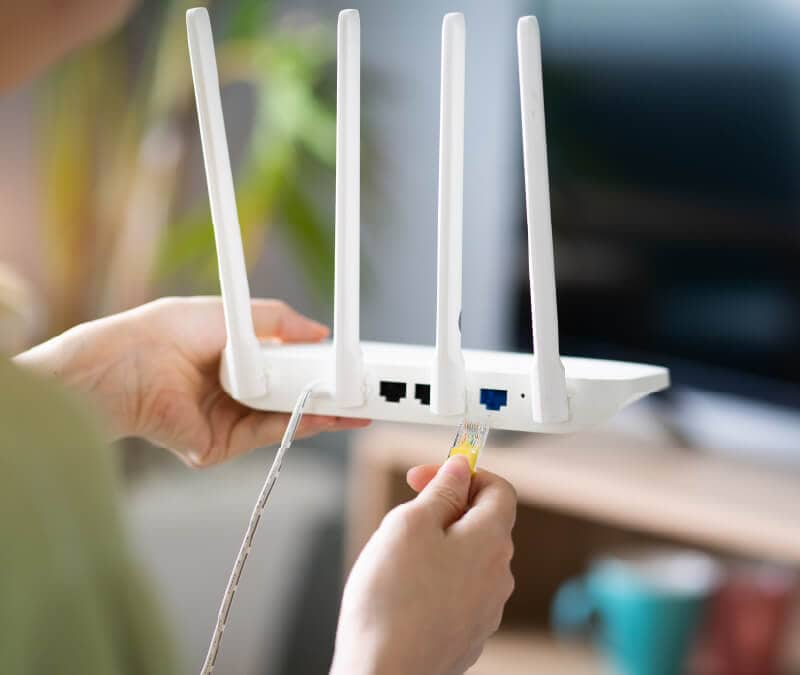
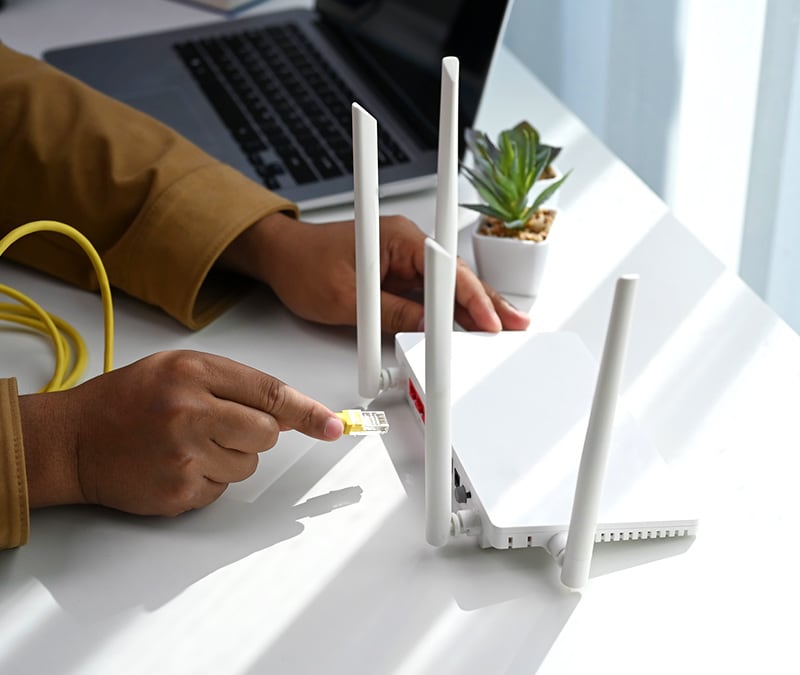
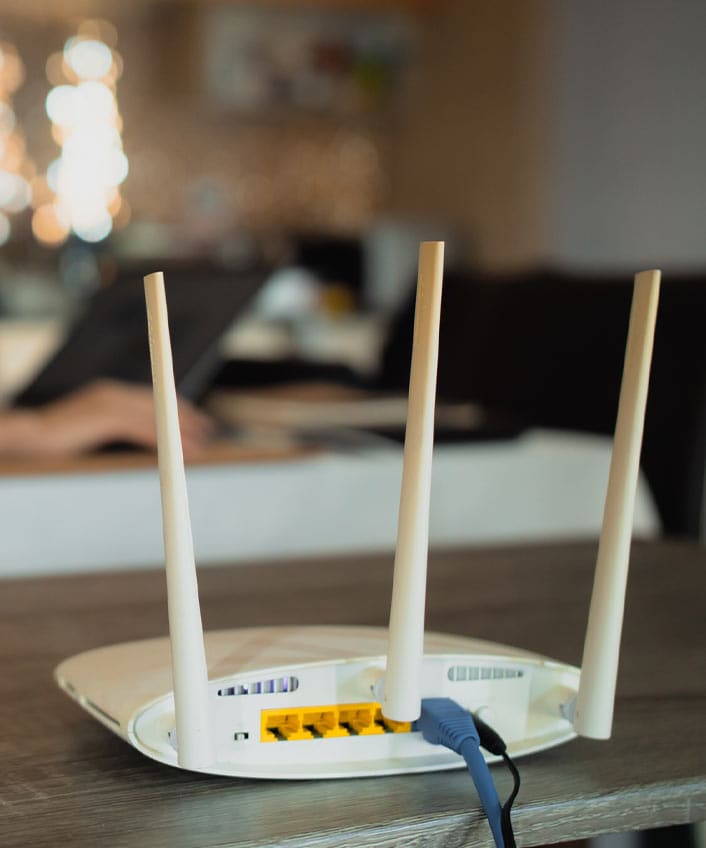

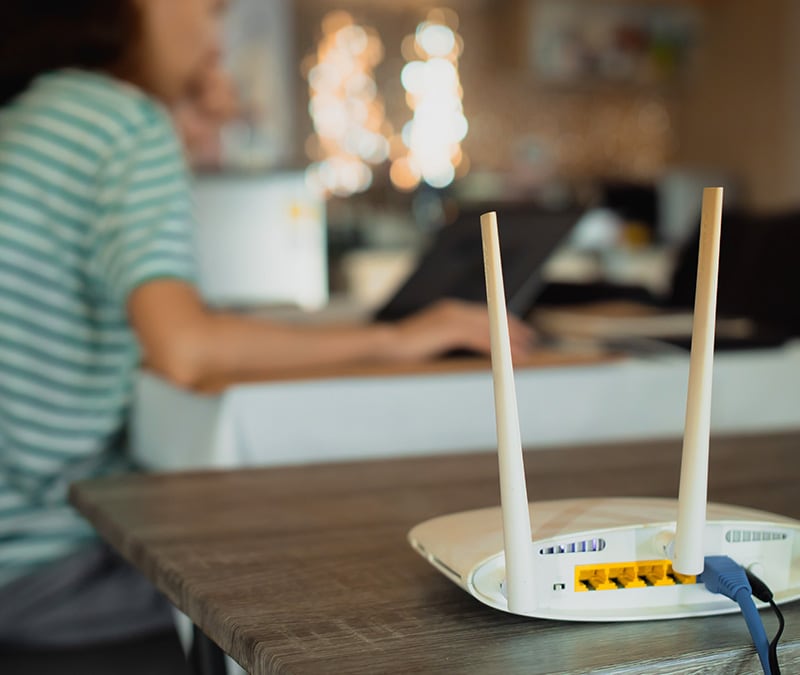

Want more?
Follow us for all the latest news, tips, and updates.